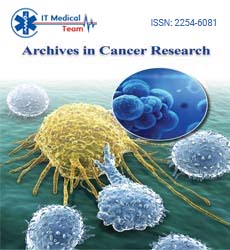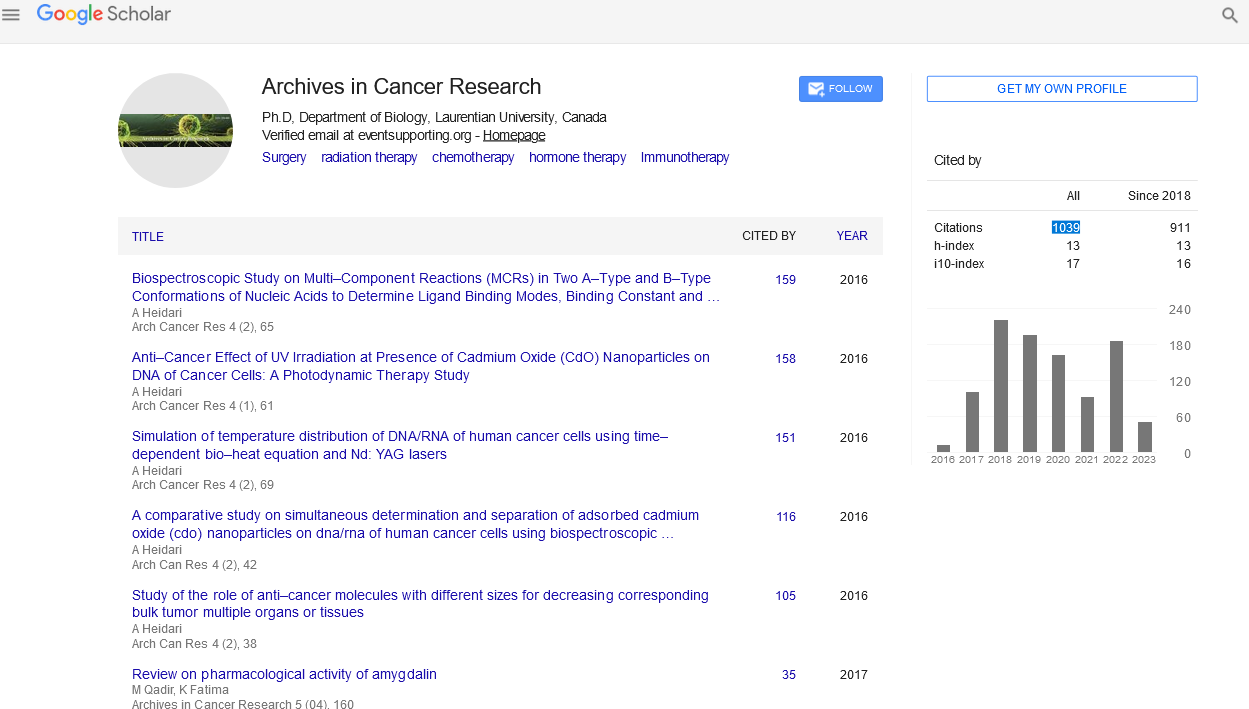Wilson I.B. Onuigbo*
Medical Foundation and Clinic, 8 Nsukka Lane, P.O. Box 1792 Enugu 400001, Nigeria
*Corresponding Author:
Wilson I.B. Onuigbo
Medical Foundation and Clinic, 8 Nsukka
Lane, P.O. Box 1792 Enugu 400001, Nigeria
Tel: 2348037208680
E-mail: wilson.onuigbo@gmail.com
Received Date: March 16, 2016; Accepted Date: April 29, 2016; Published Date: May 04, 2016
Citation: Onuigbo WI. A Comparative Study of Mammary Paget’s Disease in West Africa and the Middle East. Arch Cancer Res. 2016, 4:2.
Keywords
Paget’s disease; Ethnicity; Epidemiology; Ibos; Hebrews
Introduction
The geography of medicine considers disease patterns in different parts of the world [1]. For this reason, it was found of interest to compare the prevalence of Paget’s disease of the breast in the Ibos of West Africa and in the Hebrews of the Middle East. The choice was made on three grounds. Firstly, I had previously published on the Paget cell with reference to its historical attributes [2-4]. Secondly, in an anthropological book, Basden [5] devoted a whole chapter concerning some similarities between the Hebrews and the Ibos, the latter being thought to be a shortened form of the former! Thirdly, a reprint on Paget’s disease was sent to me from the Middle East [6]. Accordingly, its data on the Hebrews will be compared with my personal findings among the Ibos of West Africa.
Investigation
From 20th February 1970 to 19th February, 2000, I had the opportunity to receive numerous surgical specimens from several doctors ministering to Ibo patients who inhabit mainly the southeastern part of Nigeria, West Africa. My Reference Pathology Laboratory was situated in the city of Enugu, the erstwhile capital of the Eastern Region. Since my stringent stipulations on the completeness of the Request Forms, which accompanied the specimens, were largely followed, my Laboratory Reports contained sufficient data for epidemiologic analyses. Moreover, a British group [7] averred that a histopathology data pool suffices for the analysis of epidemiologic patterns. In sum, the data from Enugu in West Africa were such as to be comparable with those from Jerusalem in the Middle East. This is in keeping with the importance of surgical pathology as was perceived by the medical masters of yester years [8].
Results
1. There were 22 women with naked eye (Figure 1) and histologically proven (Figure 2) Paget’s disease of the breast during the 30-year study. As there were 1308 cases of female breast carcinoma altogether, Paget’s disease constituted 1.7% of the entire series. The Hebrew figure stood at a comparable 1.5%.

Figure 1: Naked eye appearances of Paget’s disease of the nipple in Ibo woman.

Figure 2:Microscopical appearances of Paget’s disease. Note the typical vacuolated appearance of the Paget cells along the base of the epidermis.
2. The age at presentation ranged from 27 years to 65 years, the average being 42.4 years. Tabulation was not used as it was not supplied for the Hebrews, whose range was from 30 to 75 years with the average of 54.2 years.
3. All the lesions were unilateral.
4. One Ibo woman was lactating and her parity was not given. Only 8 other women were categorized and they had 1 - 9 pregnancies, with an average of 5. The Hebrew cohort consisted of 2 nulligravida, the rest having 1 – 14 pregnancies, with an average of 4 pregnancies each.
5. Nipple changes (itching, soreness, discharge, erosion, excoriation, ulceration, retraction) were the primary symptoms in 21 patients (95.5%) unlike the Hebrew 65.5%.
6. The duration of the symptoms ranged from 3 months to 60 months with an average of 16.3 months, whereas the Hebrew figure was 10.5 months.
7. The submitted surgical specimen consisted of skin itself in 15 patients (68.2%), the respective Hebrew figure being 65.5%.
8. An inherent difference lies in the homogeneity of the Ibo stock whereas historical diversity occurred in the Jerusalem stock which was described as follows: “Sixty percent of the women were Jewish of European origin, 20% were of Asian origin, 14% were Israeli born, 1 patient was of North African origin, and 1 was Arabic.”
Discussion
From the above, it is apparent that the 22 Ibo patients fared well generally in comparison with the 29 Hebrews. This is an important result because, as was pointed out in a recent review [9], ethnicity is a demographic variable worthy of epidemiologic research. In fact, the fundamental problem concerns the acknowledged importance of the “Breast Health Global Initiative [10].” In conclusion, it should be appreciated that future research is needed in order to better determine how these guidelines can best be implemented in the limited-resource settings such as Nigeria. It may be that this aspect of breast cancer is yet to receive its fair share of attention. Thus, Paget’s disease did not feature in a recent review [11].
9156
References
- Andersen JA (1979) Spread to the nipple and areola in carcinoma of the breast. AnSurg 189:3.
- Onuigbo WIB (1985) Paget’s 1874 article on the breast. Modern misconceptions. Int J Dermatol24:537-538.
- Onuigbo WIB (1986) The Paget cell. Mistaken for a parasite a century ago. Am J Dermatopathol8:520-521.
- Onuigbo WIB (2009) Historical antecedents of Paget’s 1874 article on the female breast.Int J Dermatol48:537-538.
- Freund H, Maydovnik, Lauffer N, Durst AL (1977) Paget’s disease of the breast. J SurgOncol9: 93-98.
- Macartney JC, Rollaston TP, Codling BW (1980) Use of a histopathology data pool for epidemiological analysis. J ClinPathol 33: 351-353.
- Onuigbo WIB (2015) Thesurgical pathology of cancer: A historical review. Journal of Cancer Prevention & Current Research 2:00039.
- Chaudary MA, Millis RR, Lane EB (1986) Paget’s disease of the nipple: a ten year review including clinical, pathological, and immunohistochemical findings. Breast Cancer Res Treat 8:139-146.
- Anderson BO, Shyyan R, Eniu A (2006) Breast Health Global Initiative. Breast cancer in limited-resource countries: An overview of the breast health global initiative 2005 guidelines. Breast J 12:S3-S15.
- Cummings MC, Simpson PT, Reid LE (2014) Metastatic progression of breast cancer: insights from 50 years. J Pathol232:23-31.







